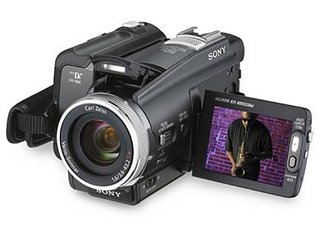 Question: Digital Camcorders are much cheaper in US than in UK, India or Singapore. However, the problem is that PAL is the standard playback format in these countries while cameras available in USA are only NTSC compatible.
Question: Digital Camcorders are much cheaper in US than in UK, India or Singapore. However, the problem is that PAL is the standard playback format in these countries while cameras available in USA are only NTSC compatible. Can we still buy a MiniDV video camera (NTSC) in the US and later use it to record, edit or play videos in India (PAL) on TV or the DVD player ?
Answer: First some boring but essential theory - The difference between PAL and NTSC is in terms of image resolution and frame rates. NTSC records at 29.97 fps while PAL records video at 25 fps. The standard sample size for NTSC is 720x480 while PAL mode has a resolution of 720x576.
For precisely the above reasons, you won't see any camcorders that can record in both NTSC and PAL formats. Most digital camcorders available in the US or Japan are NTSC compatible while PAL system is the video standard for video cameras in Europe, Australia and Asia [including India].
Now here are some answers to the most common questions that you would have before deciding to purchase a digital camera that uses a video standard not supported in your country.
Playback on Computer - Computers don't know about NTSC or PAL and your computer software is not tied to any video standard. All you need is a Firewire or USB port to connect the camcorder to the computer. The video can either be imported for editing in Windows Movie Maker or played directly using Windows Media Player or Real Player.
MiniDV Tapes - Just like most hard disk are compatible with either FAT32 or NTFS file systems, MiniDV tapes can be used with either PAL or NTSC cameras. They are independent of the video standard in your country. You can even use the same MiniDV tape inside two cameras with different modes.
Playback on TV or DVD Players - Most Television sets can handle both NTSC and PAL [check the program options]. Same holds true for DVD players but if you have an old TV, you might want to read the manual first.
Converting NTSC to PAL or vice-versa - While there will be some loss of quality when you are converting video formats, it is very much possible. Almost every video editing suite like Adobe Premiere Pro, Ulead VideoStudio, Pinnacle Studio, Sony Vegas, Apple Final Cut Pro supports video in NTSC and PAL format. Infact you can use the same software to output the footing in the two formats.
If you need a simple 1-click solution to make VCDs or DVDs from your videos, try transcoding the video in MPEG format using TMPGEnc Express and burn it on a DVD. The rendering time would however depend on your computer configuration plus you need lot of free hard disk space.
Final Advice: If you are planning to watch your video footage directly on a TV without editing it on a computer, it's best to buy a camcorder that supports the format of your region (like PAL in India or NTSC in UK). But if you have a dual mode Televsion, the video standard is immaterial as the TV can play either of the format. Another important point here is that MiniDV tapes recorded on an NTSC camcorder will play only on NSTC supported TV or VCR (same for PAL). You may also like to check if the manufacturer warranty stays valid in your country if it's different from where you made the purchase.
Naming Conventions: Panasonic 3CCD Digital Cameras are available in two variants - PV GS300 and NV GS 300 - the PV denotes NTSC while NV refers to PAL standard. The same is with Sony cameras like the Sony DCR HC46 - they append an 'E' to denote PAL compatible cameras.
Popular MiniDV Camcorders for Video Podcasting: Canon Elura 100, Panasonic PV-GS500, Sony DCR HC36, Sony HDR HC3, Canon GL2
References: Wikipedia, ecoustics.com, Michael DVD